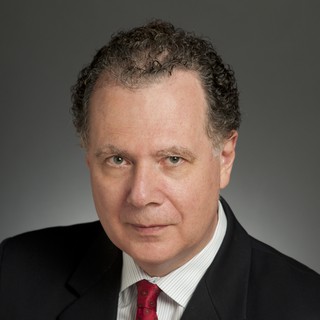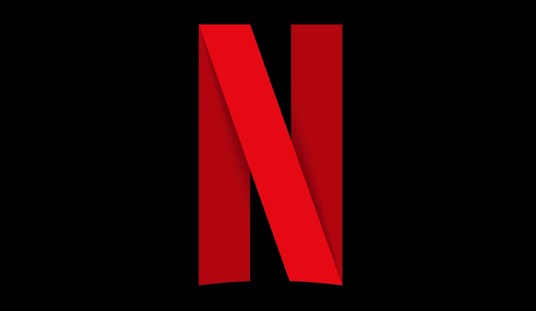From Asia Times
Twenty years ago, Yale University’s Harold Bloom offered a reading list in great literature under the title The Western Canon, with the caveat that it was impossible to teach literature to American undergraduates. So threadbare was their background, he lamented, that they could not grasp the dialogue across time among literary masters. The good news is that Bloom was wrong: not only great Western literature, but philosophy, mathematics and science are still grasped at a high level by undergraduates. The bad news is that they are doing so in tiny numbers, at St. John’s College in Annapolis, Maryland and Santa Fe, New Mexico. Western civilization isn’t extinct, but it survives in the cultural equivalent of a tide pool, with limited access and egress.
Last weekend I climbed the long hill crowned by St. John’s Santa Fe campus to observe its graduation exercise (it was held on Shabbat, which required me to walk). Led by a faculty member in full academic regalia carrying a ceremonial mace, its graduating class marched to the music of Haendel and received diplomas and the Bacculaureate hood between choral interludes of Campion and Palestrina. Like the St. John’s program itself, the ceremony carried the dignity of an older and better world, but it faced an audience of parents and siblings in T-shirts and sandals.
St. John’s great books curriculum spans Homer to Heidegger, and requires a working knowledge of ancient Greek as well as conic sections and Calculus, along with some familiarity with French and quantum mechanics. Other undergraduate schools require survey courses in Western civilization, to be sure—St. John’s itself is a spinoff from the old University of Chicago curriculum—but they have for the most part surrendered to the new barbarian invasion from the Left, which demands that universities retrofit intellectual history to repair the fragile self-esteem of history’s losers. Classical education has just the opposite goal, namely to teach us to distinguish between self-doomed societies whose flaws tragically destroy them, and polities with the prospect of survival.
Mainstream university life has gone mad. Satire herself stands mute before incidents like the following dispatch from my old undergraduate college, which used to teach Greek and Roman sources in mandatory courses:
“Ovid’s ‘Metamorphoses’ is a fixture of Lit Hum, but like so many texts in the Western canon, it contains triggering and offensive material that marginalizes student identities in the classroom,” wrote four [Columbia University] students, who are members of Columbia’s Multicultural Affairs Advisory Board. “These texts, wrought with histories and narratives of exclusion and oppression, can be difficult to read and discuss as a survivor, a person of color, or a student from a low-income background.”
Wellesley College, Hillary Clinton’s alma mater, has cancelled its annual performance of “The Vagina Monologues”—itself a vulgar slap at the supposed male bias of Western civilization—because it is upsetting to transgendered women whodo not have vaginas. Perhaps the politically-correct women of Wellesley could rewrite the play as “The Anus Monologues.” That lowest common denominator would include everyone.
There is more than smidgen of fairness in the feminist accusation of male bias at major universities: locker-room culture is the observe side of political correctness. The issue has become so colored ideologically that it is impossible to make an unbiased judgment about the extent misogyny at American universities. The cover-up of rape allegations at the University of Florida by academic authorities as well as local police is one case in point; the fabrication of a rape case at University of Virginia by Rolling Stone magazine is another. Nonetheless, sports culture is a simian exercise in mass stupidity inherently prejudicial to the gender with smaller biceps. Nonetheless, sports are the key to alumni fundraising at most major universities, a gauge of the infantilism of intellectual life in America.
The gladiatorial violence of university sports requires the recruitment of cyclopean dolts with a propensity for mayhem, and this sets the tone for university life; for color, one might browse (but not read) Tom Wolfe’s dreadful but informative academic novel I Am Charlotte Simmons.
America’s sports-centered culture excludes women when it does not victimize them; it explains why America never has produced a Margaret Thatcher, who went to Oxford on a science scholarship, nor an Angela Merkel, a first-rate quantum chemist, nor a Golda Meir. European women can ascend to the top of the power structure on intellectual merit, a quality that Americans characteristically regard with distrust. The only American woman with a chance to become president trades on her husband’s previous success. Former Secretary of State Condoleezza Rice is an exception that proves the rule. As David Samuels quipped in a 2007 Atlantic profile, “Rice’s obsession with sports makes it easier for her to function in a world of men who may not be immediately comfortable taking direction from a younger black woman, but who will respect anyone who can name the winning quarterback for every Super Bowl off the top of her head.”
St. John’s axolotl mascot emblemizes its unique mission. The college has as much contempt for campus sports culture as it does for political correctness. There is simply nothing like this combination of curriculum and instruction to be found anywhere else in the United States. There are a few small Catholic and Protestant schools that teach classics, but none with this intensity (and the Catholic schools are stuck with an excess of Aristotle and Aquinas, whom I think dull).
St. John’s takes in a hundred freshmen each year and graduates perhaps seventy of them on each campus. Many do not survive freshmen year, with two or three daily hours of homework in ancient Greek. The faculty (called “tutors” rather than professor) is an eclectic assemblage of brilliant and sometimes eccentric scholars who come there to teach undergraduates rather than play academic career games. There are no lectures, only seminars and tutorials: Johnnies not only have to read the great works of the West but stand up and explain them before their teachers and peers.
I have a number of quibbles with the course work: there is far too much emphasis on French at the expense of German, for example. Nothing has been written in French in the past two hundred years excepting Baudelaire and a couple of other poets that cannot be read as well in translation, and none of it is of real importance to undergraduate education. Without knowingGoethe really well, though, it is impossible to make sense of 19th and 20th century philosophy, Nietzsche and Heidegger in particular—and a great deal of Goethe is lost in translation.
A deeper problem accounts for the lacunae in St. John’s curriculum: the “Great Books” curriculum arises from consensus and custom rather than authority. Goethe is important not because he is a great lyric poet, but because he led the grand program of the German Classic to recreate the accomplishments of religion by secular means. His character Mephistopheles looks back toEcclesiastes and forward to Heidegger. Goethe mediates the great question—why is life worthwhile in the first place?—between the biblical and the modern worlds. The designers of the St. John’s curriculum in their 20th-century secularism failed to grasp the tension between religion and the Enlightenment.
Here the religious schools have an advantage, because the Magisterium of the Catholics and the masorah of the Jews set down a canon tested over the centuries. There are fewer than 800 undergraduates at the two St. John’s campuses, while one American yeshiva (center of traditional Jewish higher learning), Beth Medrash Govoha in Lakewood, N.J., has ten times that number of students. The number of religious Jews studying traditional sources worldwide outnumbers the total number of students of classic Western texts by an order of magnitude; more than 300,000 read a daily page of Talmud (Daf Yomi), completing the voluminous compendium of Jewish teaching in a seven-year cycle.
The traditional Catholic colleges attract a surprising small number of students; the three colleges that offer the most intensive classical curriculum (St. Thomas Aquinas, Wyoming Catholic College and Ave Maria) have fewer than 1,400 students among them, and the total number of students in conservative Catholic colleges (according to the Cardinal Newman Society list) barely totals 10,000.
By coincidence, the graduation ceremonies I attended fell on the eve of the Jewish festival of Shavuot (Pentecost), the celebration of the giving of the Torah at Mount Sinai. Jews do not simply read the Torah (Bible and rabbinic commentaries) as a “great book,” but relive it. As Rabbi Berel Levertov reminded his small congregation at Chabad of Santa Fe, “All Israel”—every Jew who ever lived and all those yet to be born–are present at Mount Sinai, and Shavuot is less an anniversary celebration than the enduring presence of the original revelation. Jews read the Torah as autobiography, and that explains why Jews, who comprise just 0.5% of the world population, are so eager to learn classic sources that they make up the vast majority of such students in the West.
St. John’s cannot find enough qualified students (although more recruitment in Asia might eventually solve that problem). Once it trains them, it doesn’t know what to do with them. At the elite Ivy League schools, undergraduates absorb a kind of intellectual content, but this mainly amounts to socialization in the liberal elite’s current fancies. Johnnies graduate with a Jovian disdain for the ephemeral and a burned-in skepticism about academic fads. That makes them unsuitable for most aspects of professional life; it is hard for them to become stupid enough to succeed in public service. The Great Books curriculum arose from a concern with political leadership, and its original object was to train leaders for public life—diplomacy, the military and intelligence. I asked the outgoing president of St. John’s Santa Fe, the distinguished soldier and diplomat Michael Peters, how the college’s public-service agenda was faring. “It’s mixed,” Peters allowed.
The topics of Johnnies’ senior papers are published; very few this year were devoted to political philosophy, and most of those were written by Asian students. Many papers were devoted to imagery in Virginia Woolf or character development in Tolstoy’s War and Peace. I cannot read Virginia Woolf and don’t like Tolstoy, but that’s beside the point. The Johnnies know they are at odds with the world around them, and understandably drift towards self-absorption. That is less the school’s problem than the problem of the ambient culture, but it cannot fail to have an impact on the students.
For undergraduates without the deep religious commitment that might bring them to Yeshiva University in New York or St. Thomas Aquinas College in California, St. John’s remains the last, best place in America to learn Western civilization in seriousness. I do not mean to deprecate other Great Books programs, but no other school trains its undergraduates as intensively. It is a sad gauge of the state of American culture that so few students rally to the Fighting Axolotls. It is even more alarming that St. John’s graduates do not pass easily into positions of responsibility in public life.












Join the conversation as a VIP Member